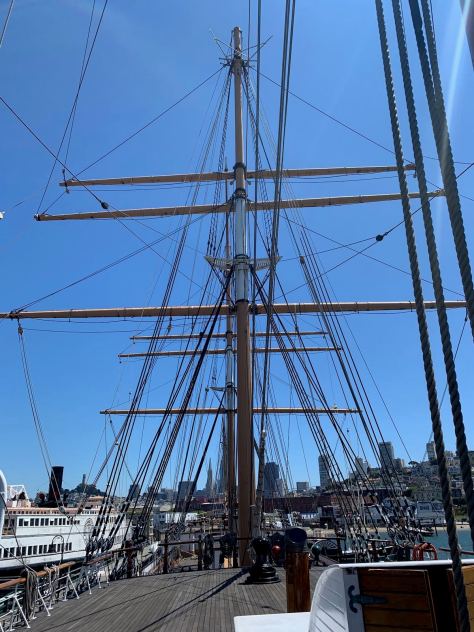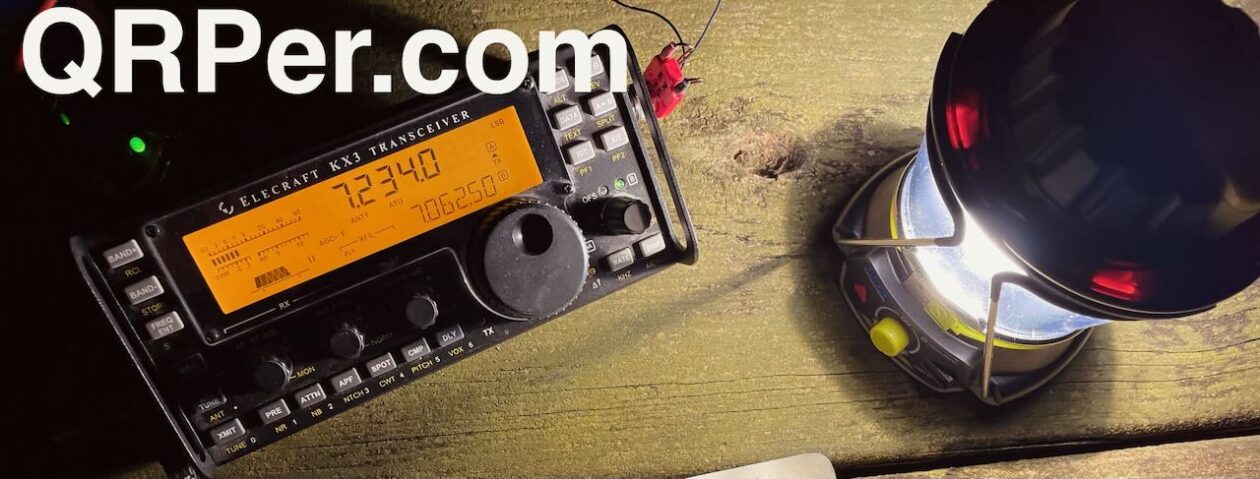Many thanks to Matt (W6CSN) who shares the following post from his blog at W6CSN.Blog:
SF Maritime NHP POTA Activation
by Matt (W6CSN)
There are several Parks On The Air eligible parks in San Francisco and the northern tip of the peninsula of the same name. One would expect that a POTA activator that calls this city home, would have logged activations from all of these parks, but so far this one has eluded me.

The San Francisco Maritime National Historic Park (K-0757) sits at the northern edge of the city, right next to the Fisherman’s Wharf area that is so popular with tourists visiting San Francisco.

The National Park encompasses an area that includes the municipal pier, aquatic cove with its small public beach, the art deco style Maritime Museum, and Hyde Street Pier with its floating collection of historic ships.

For various schedule and logistical reasons, K-0757 was the one park in the city that I had not yet activated. So today, when my daughter wanted to visit the ships, I made sure to have my lightweight POTA “go” pack with me in case I found an opportunity to attempt an activation.
I’d say the main attraction at Hyde Street Pier is the Balclutha, a steel hulled, square rigged, cargo ship built near Glasgow, Scotland and launched in 1886.

Balclutha is continually undergoing restoration and maintenance by the Park Service and skilled volunteers. Her many careers on the world’s oceans are documented with numerous interpretive stations and exhibits, both topside and below decks.
We wrapped up our tour of the vessels on the pier by exploring C.A. Thayer, a 219 foot long sailing schooner built in 1895 near Eureka, California to serve the coastal timber trade.

I was thinking about where to activate and not really looking forward to setting up on or around the public beach. Between the Aquatic Cove swimmers, people enjoying the beach, and tourists going to and fro, there wasn’t really an “out of the way” location to setup even a small station.
Hyde Street Pier itself was actually pretty quiet, but I wasn’t about to set up my station there without prior approval of park staff. Just as we were about disembark from Thayer I noticed an NPS employee near the gangway, and so I took the opportunity to inquire about setting up my low impact, leave no trace, POTA station.
It turns out the person I talked to on the deck of C.A. Thayer was the supervisor of the SF Maritime National Historic Park! He is keenly interested in radio and was even aware of recent solar activities that have given us amateurs a mixed bag of propagation conditions. He agreed to my request to set up at the end of the pier, past Balclutha’s gangway.

I used the Gabil GRA-3750T antenna with its stock telescopic whip tuned for 20 meters. This is the most low profile antenna I can field for HF. Yes, it’s a compromised antenna system but as you’ll see it works good enough.
I wasn’t sure what kind of signal I’d be putting out operating QRP just a few meters from the large steel hulled Balclutha. The ship was between me and stations to the west, which from here means Hawaii and Asia. Perhaps Balclutha’s hull would reflect my signal to the east, improving my chances of reaching the more numerous North American hunters. Who knows?

It started off a little slow, with about ten minutes of calling after I spotted myself on pota.app. But once it got going, the activation moved along at a fair pace.

In all I worked 12 stations in about 40 minutes, with calls from as far as North Carolina to the east and Louisiana on the gulf coast.
The final call in the log was NL7V from Alaska, which was fortuitous as the ship I was operating next to was once named “Star of Alaska” when she worked in the salmon trade.
I definitely recommend visiting the San Francisco Maritime National Historic Park whenever you come to SF. Everyone here, docents, volunteers and NPS park staff are really nice people and are working hard to preserve this public resource for all to enjoy.
That said, I would not recommend attempting a POTA activation from Hyde Street Pier without getting prior approval from NPS park staff. This is a sensitive historical site and its suitability for amateur radio use will vary depending on how the park is being utilized at the time.

73 de W6CSN









Matt,
Great report! And yes, it appears your propogation was affected by the steel hull… as your propo map illustrates, interesting!
Next time, climb the rigging and hang a wire (hihi)!
de W7UDT
Well, as it turns out, that eastward bias is present in most of my activations. Fact is, at the time of day I operate QRP on 20 meters and the thousands of miles of empty ocean to the west, most of my contacts are to the east 🙂
Interestingly enough, Balclutha has some antenna infrastructure already installed, I’m told. And there may be the possibility of increased amateur operation from the park in the future, stay tuned.